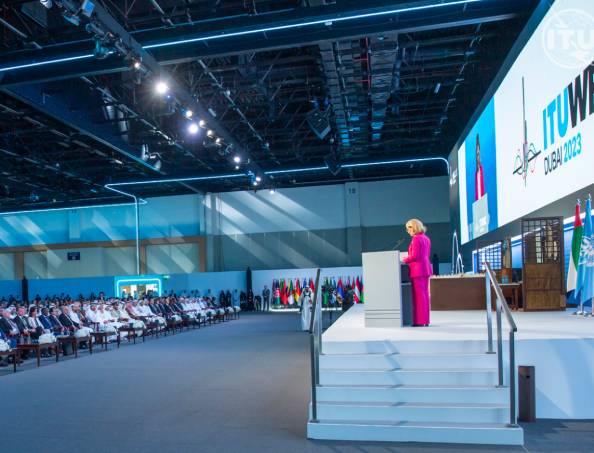
Dubai, December 17 2023: ​​​​​Member States of the International Telecommunication Union (ITU) agreed on revisions to the global treaty governing the use of the radio frequency spectrum, both on Earth and in space, at the close of the World Radiocommunication Conference 2023 (WRC-23) on December 15 in Dubai, United Arab Emirates.
The agreement on updates to the Radio Regulations identifies new spectrum resources to support technological innovation, deepen global connectivity, increase access to and equitable use of space-based radio resources, and enhance safety at sea, in the air, and on land.
“WRC-23 puts the world on a solid path towards a more connected, sustainable, equitable and inclusive digital future for all," said Doreen Bogdan-Martin, ITU Secretary-General. “Key regulatory achievements on spectrum for space, science and terrestrial radio services build on the momentum of ITU's ongoing work to achieve universal connectivity and sustainable digital transformation."
A total of 151​ Member States signed the WRC-23 Final Acts. The Final Acts constitute a record of the decisions taken at the conference including both the new and revised provisions of the Radio Regulations, all Appendices, and the new and revised Resolutions and ITU-R Recommendations incorporated by reference into the treaty by the conference.
Said Mario Maniewicz, Director of the ITU Radiocommunication Bureau: “Navigating the complexities of spectrum sharing to update the Radio Regulations has helped us forge a path that provides a stable, predictable regulatory environment essential for the development of innovative radiocommunication services for all."
Revisions to ITU's Radio Regulations
Among the decisions, WRC-23 identified spectrum for International Mobile Telecommunications (IMT), which will be crucial for expanding broadband connectivity and developing IMT mobile services, also known as 4G, 5G and, in the future, 6G. That new spectrum includes the 3 300-3 400 megahertz (MHz), 3 600-3 800 MHz, 4 800-4 990 MHz and 6 425-7 125 MHz frequency bands in various countries and regions.
WRC-23 also identified the 2 GHz and 2.6 GHz bands for using high-altitude platform stations as IMT base stations (HIBS) and established regulations for their operations. This technology offers a new platform to provide mobile broadband with minimal infrastructure using the same frequencies and devices as IMT mobile networks. HIBS can contribute to bridging the digital divide in remote and rural areas and maintain connectivity during disasters.
For non-geostationary fixed-satellite service Earth Stations in Motion (ESIMs), the conference identified new frequencies to deliver high-speed broadband onboard aircraft, vessels, trains, and vehicles. These satellite services are also critical following disasters where local communication infrastructure is damaged or destroyed.
The conference, which took place in Dubai from 20 November to 15 December, was hosted by the Telecommunications and Digital Government Regulatory Authority (TDRA) of the UAE.